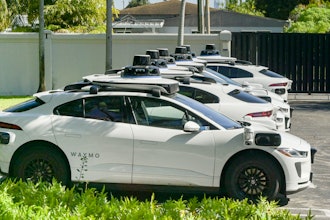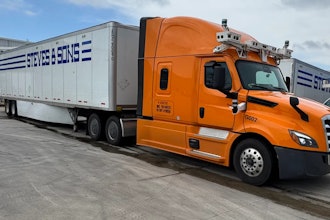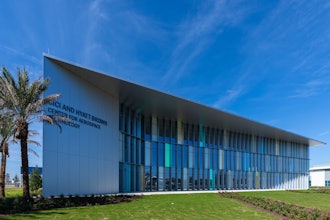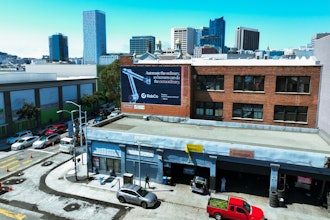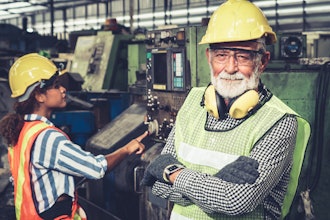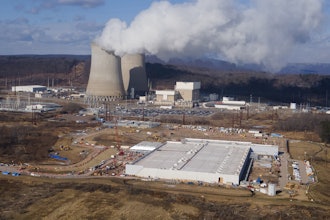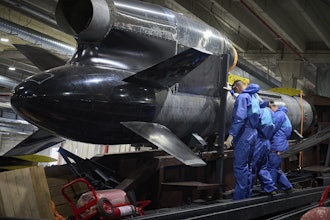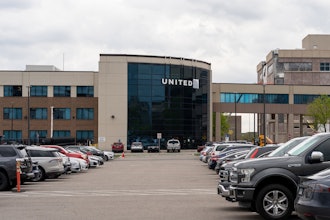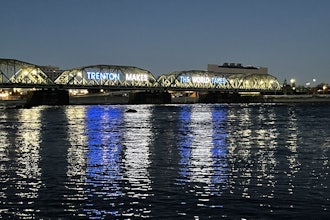
 Desi Matel-Anderson , Field Innovation Team
Desi Matel-Anderson , Field Innovation TeamThe frequency and intensity of disasters are increasing, from mighty hurricanes hurling through warm ocean waters, to shifting tectonic plates that build earthquakes, to atmospheric weather patterns that create wide-scale floods.
Through it all, critical operations need to be up and running for our communities, companies, survivors, and families.
Here is a template to help teams find innovative real-time solutions to a variety of disaster response scenarios.
Three-Step Planning Process
FIT’s Disaster Simulation Labs use a process called “design thinking” to help emergency preparedness teams better understand the problems they need to solve, identify whom they are solving them for and why, and prototype how they will go about solving them.
STEP 1: What
Many staff in your organization may find themselves in emergency situations. Defining and outlining potential disaster scenarios and the challenges they will likely face should provide insight and preparedness strategies that otherwise may have been overlooked.
Common challenges include:
- Extreme weather: Teams must recognize that the frequency and severity of extreme weather events has been increasing, and acknowledge that what may have been a really good plan in the past may no longer be sufficient.
- Infrastructure: A lot of legacy equipment in the field may need repair, and in many cases replacement. Understanding where these deficiencies exist as well as the risk assessment is an essential component of the “what.”
- Liability: Power companies face liability challenges from equipment failure, aged infrastructure and security flaws. They are being held to higher accountability standards and are called to task when there are incidents.
- Resource Constraints: Upgrading and maintaining systems can be costly, and additional staffing costs can be a burden. Proper planning and budgeting is another essential part of the “what.”
Step 2: Who & Why
Once an emergency preparedness team identifies a problem it needs to solve, it can start thinking about “who” they are solving it for. Put yourself in their shoes. For example, the “who” might be line workers. The “why” could be administering power to minimize dialysis disruption for a health clinic due to an electric outage.
Whatever the case, once the “why” is defined, team leaders should empower staff to help prototype the next step: “how” they will go about solving the “what.”
Step 3: How
There are four key phases in disaster planning: Preparedness, Response, Recovery and Mitigation. Leveraging technology and innovation is becoming increasingly necessary to effectively manage each of those phases. In working with emergency preparedness teams, we’ve seen many examples of real-time innovation once people are empowered to think creatively.
At one of our Disaster Simulation Labs, participants role-played a scenario where a giant solar flare knocked out the power grid in New York City and left millions without power. That was the “what.” The “who” was the utility provider and emergency responders. The “why” was that the grid needed to be restored ASAP. Teams looked at technology as they worked together to build prototypes of the “how.”
Leveraging Technology and Social Media
The technology they used included robotics. Drones could be used to help provide situational awareness, such as neighborhoods with downed powerlines. Robotics could also be used on the ground to assist humans in reinstalling portions of the power grid. That innovative, yet practical approach would also work in a tornado response scenario.
Artificial intelligence (AI) is also being leveraged in disaster response. For example, AI can analyze images and identify things like flooding, damaged buildings and blocked roads. AI can also be used to analyze social media posts to help filter out the illegitimate.
Social media can be effective during a disaster; however, emergency management teams need to be building these channels long before a disaster ever happens. It’s part of the preparedness component. When a social media page, hashtag, etc. are up and running, verified and reliable—and the public has awareness—social media can be a very powerful tool both before, during and after a disaster.
Innovation Isn’t Always About Technology
Sometimes technology can let you down, and you may need to go “old school” with more “manual” tactics to resolve problems. It’s about collaborative exploration that pulls on diverse knowledge-sharing. A few examples of this came from Nebraskan communities during a recent workshop we ran:
- Use of airboats for rescue and evacuation in areas populated with shallow rivers and creeks
- Modification of golf carts to transport mobility-challenged evacuees
- Pre-disaster campaigns for electricity-dependent community members to pre-register for priority assistance
The Bottom Line: Innovative Thinking Can Produce Results
Globally, responders have common knowledge of emergency situations. However, each community and its responders are dealing with their own unique set of challenges. At times, people can become trapped in the way they have always done things. But when the tried and true is no longer producing the needed results, that’s when innovation is needed the most.
When discussing new and innovative ways to overcome challenges, you can see the “lightbulbs go on” in the room, and that inspires everyone.
Desi Matel-Anderson heads FIT (Field Innovation Team) and is the first and former Chief Innovation Advisor at FEMA and Think Tank Strategic Vision Coordinator.










